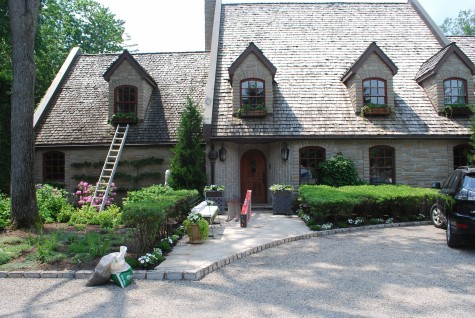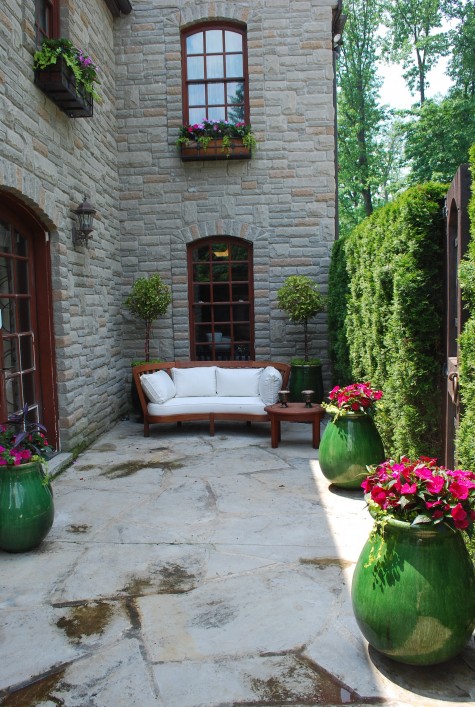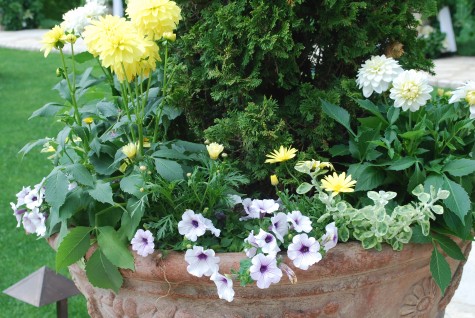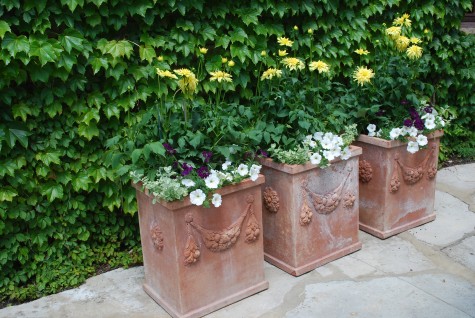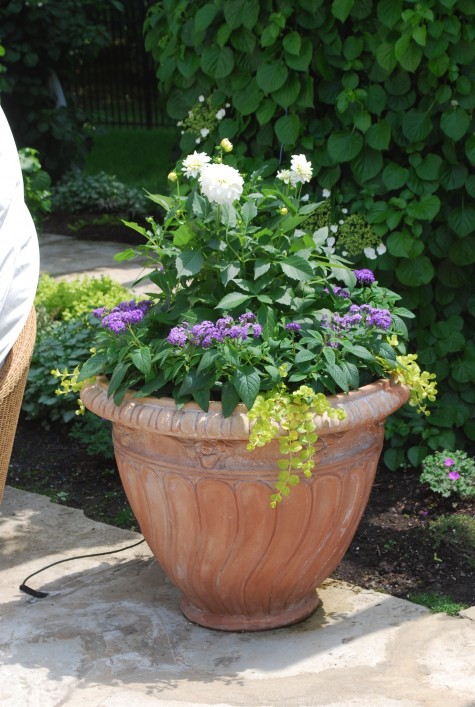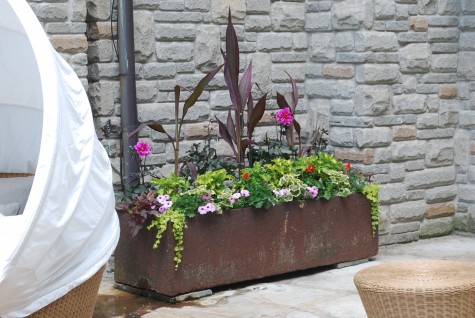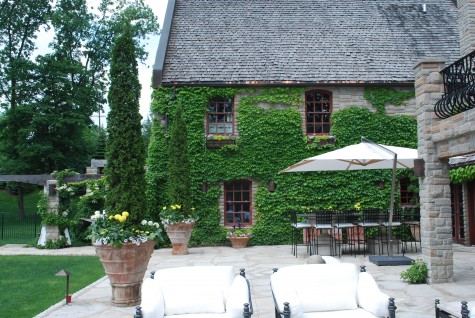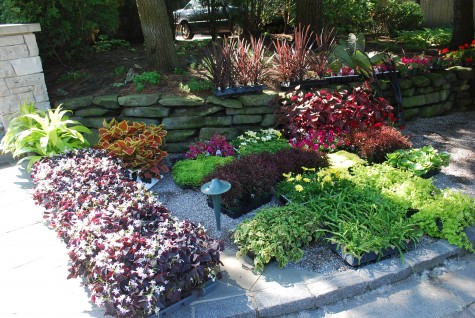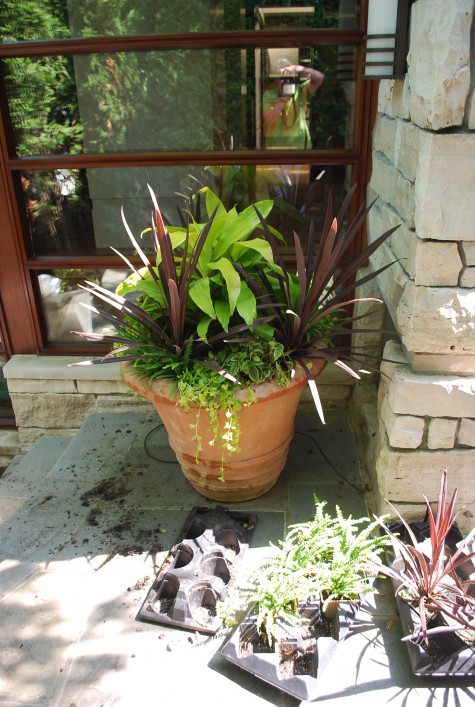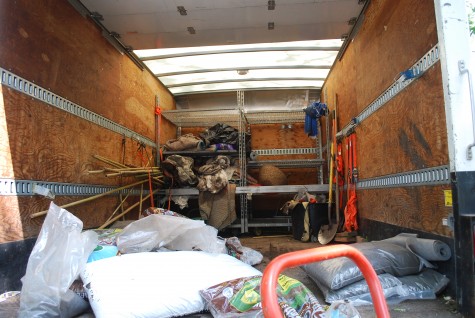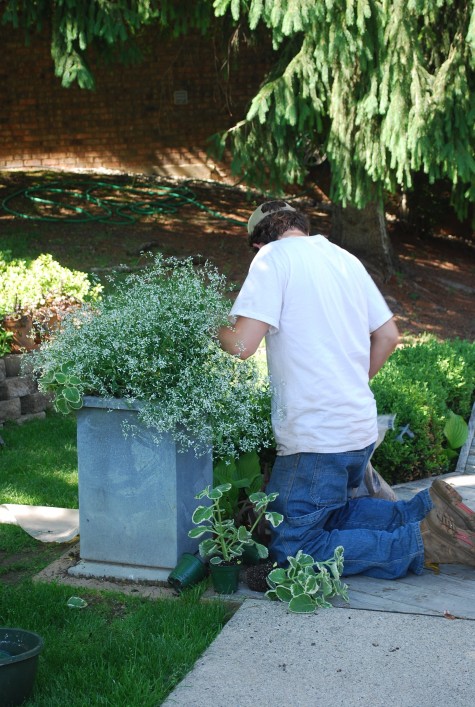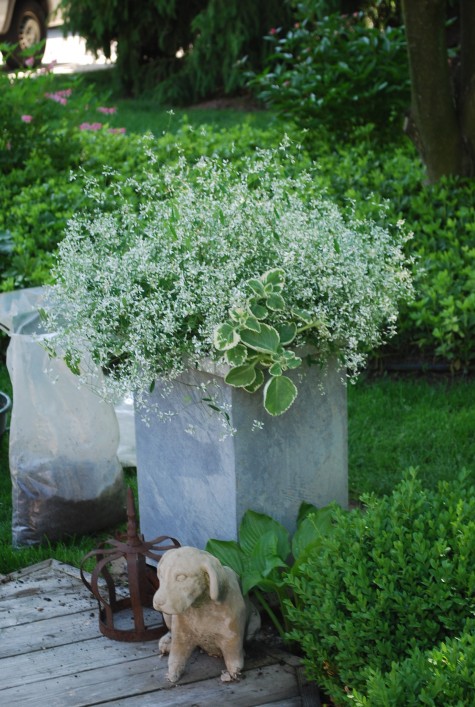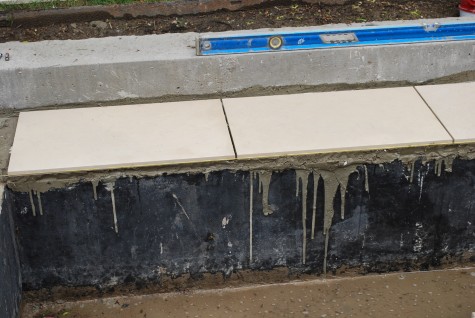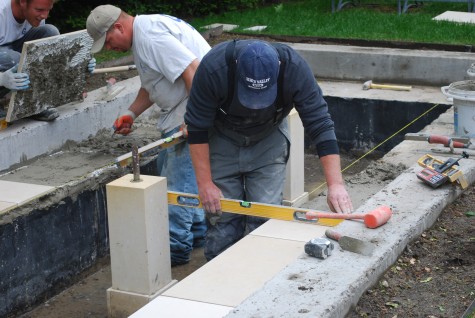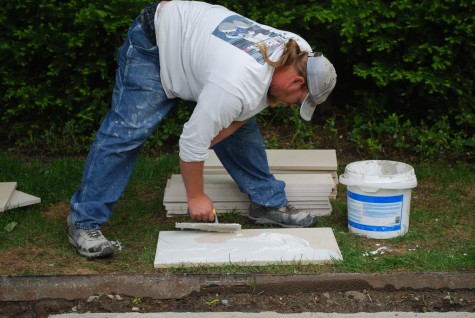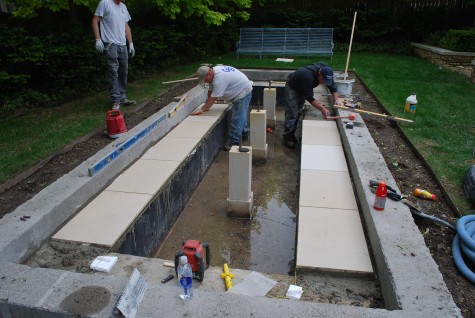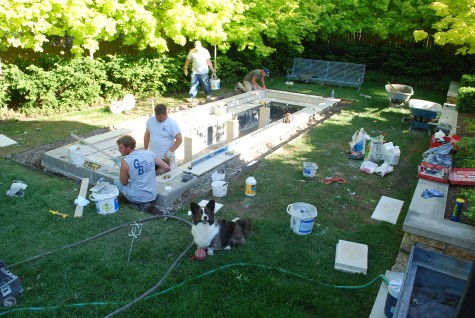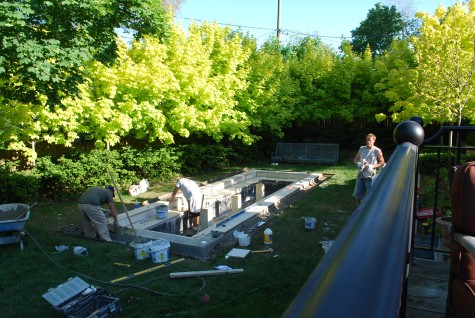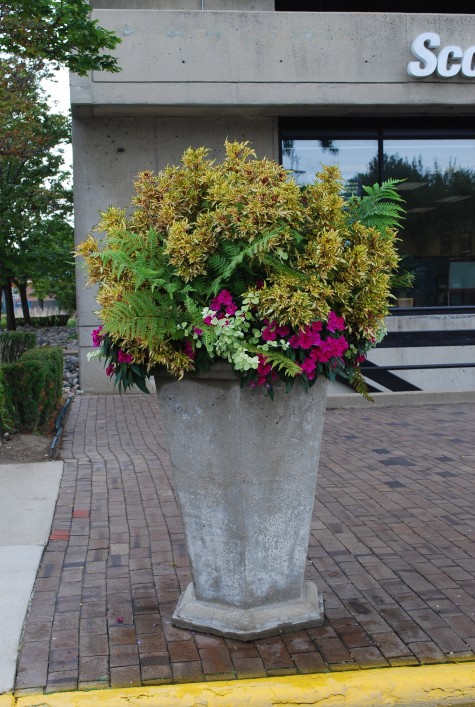 I cannot really remember how long ago it was that the city of Birmingham called, wanting to purchase planters for their sidewalks. After considerable research into what was available, I decided to propose a custom made concrete pot-designed and fabricated by me. I felt everything available was either too small, or had too big a footprint to fit gracefully on the walk. Rob was mildy appalled that I would commit to making pots-I had, after all, never done it before.
I cannot really remember how long ago it was that the city of Birmingham called, wanting to purchase planters for their sidewalks. After considerable research into what was available, I decided to propose a custom made concrete pot-designed and fabricated by me. I felt everything available was either too small, or had too big a footprint to fit gracefully on the walk. Rob was mildy appalled that I would commit to making pots-I had, after all, never done it before.
 A contractor with whom I had done many projects assured me that I could make the pots. After much review from this city agency and that, we were hired to make 30 pots. The fabrication actually went quite well; my crew made them over a winter. We submitted a proposal to fill the pots and plant them for the summer and winter; a three year contract was signed.
A contractor with whom I had done many projects assured me that I could make the pots. After much review from this city agency and that, we were hired to make 30 pots. The fabrication actually went quite well; my crew made them over a winter. We submitted a proposal to fill the pots and plant them for the summer and winter; a three year contract was signed.
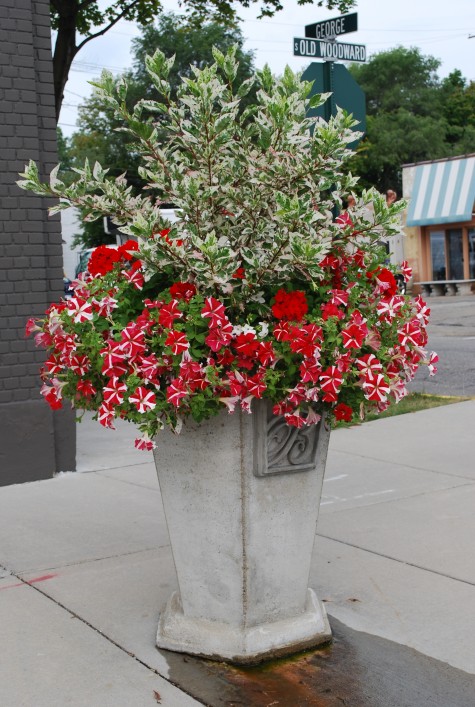 The city eventually awarded the winter pot contract to someone else. I was disappointed-doing those pots for winter was lots of work and loads of fun. I planted the summer pots for many years-until this year. The contract was awarded to someone else. I so loved planting these pots-each and every one was different. Though I am very disappointed not to be doing them, I did have the opportunity to do them for many years. Here is a small collection of some of my favorites. This one was planted in celebration of the Wings winning the Stanley Cup. The variegated hibiscus is handsome.
The city eventually awarded the winter pot contract to someone else. I was disappointed-doing those pots for winter was lots of work and loads of fun. I planted the summer pots for many years-until this year. The contract was awarded to someone else. I so loved planting these pots-each and every one was different. Though I am very disappointed not to be doing them, I did have the opportunity to do them for many years. Here is a small collection of some of my favorites. This one was planted in celebration of the Wings winning the Stanley Cup. The variegated hibiscus is handsome.
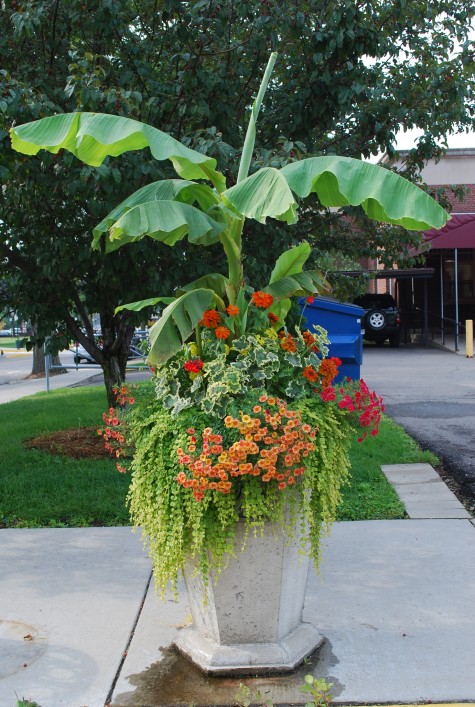 This insouciant number with its swaying banana looked to me like a visual samba. The pots are very large, and required materials that would grow even larger. A banana is obliging in that regard.
This insouciant number with its swaying banana looked to me like a visual samba. The pots are very large, and required materials that would grow even larger. A banana is obliging in that regard.
 This red leaved hibiscus is notable for the color of its foliage-I have actually never seen one bloom. It grew into an enormous shrub over the course of the summer; the skirt of coleus and lime licorice lights up the top. The bullseye geraniums I planted in May are now completely engulfed by licorice-save for one red bloom.
This red leaved hibiscus is notable for the color of its foliage-I have actually never seen one bloom. It grew into an enormous shrub over the course of the summer; the skirt of coleus and lime licorice lights up the top. The bullseye geraniums I planted in May are now completely engulfed by licorice-save for one red bloom.
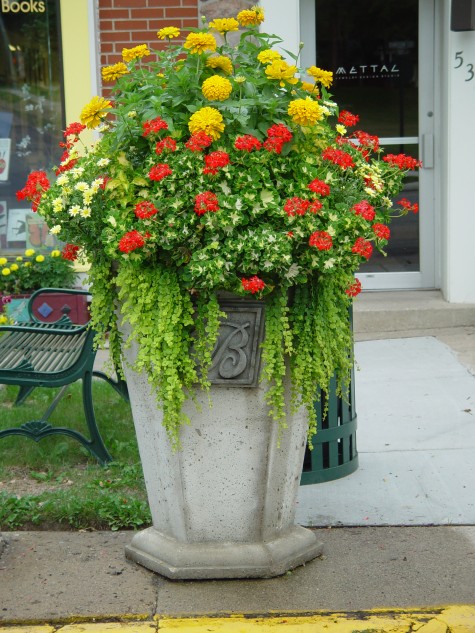
Yellow sun zinnias and red geraniums make a big splash. That’s what you want, when a vast majority of your viewers are driving by, not lingering.
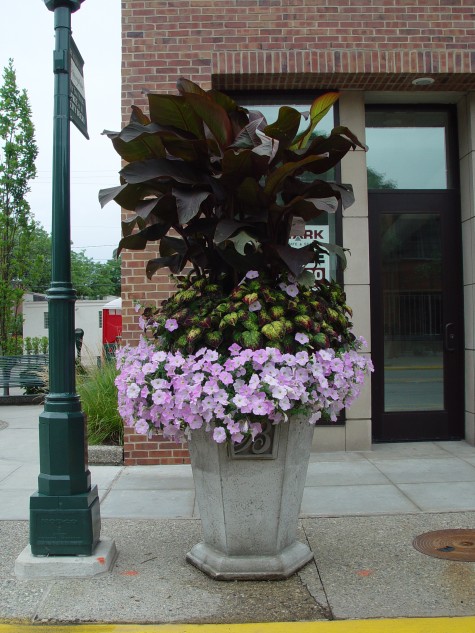 Cannas are happy in large pots and in hot weather. The air temperature on a busy city street is bound to be cooking hot in August. Not every plant loves an environment like this. Conversely, there are plants that will be happy in the environment you have-it is a matter of making their acquaintance.
Cannas are happy in large pots and in hot weather. The air temperature on a busy city street is bound to be cooking hot in August. Not every plant loves an environment like this. Conversely, there are plants that will be happy in the environment you have-it is a matter of making their acquaintance.
 One year I loaned the city some evergreen topiaries, and underplanted them.
One year I loaned the city some evergreen topiaries, and underplanted them.
 Also on loan, a topiary lantana that had belonged to me for years. It had gotten so large I no longer had space for it at home.
Also on loan, a topiary lantana that had belonged to me for years. It had gotten so large I no longer had space for it at home.
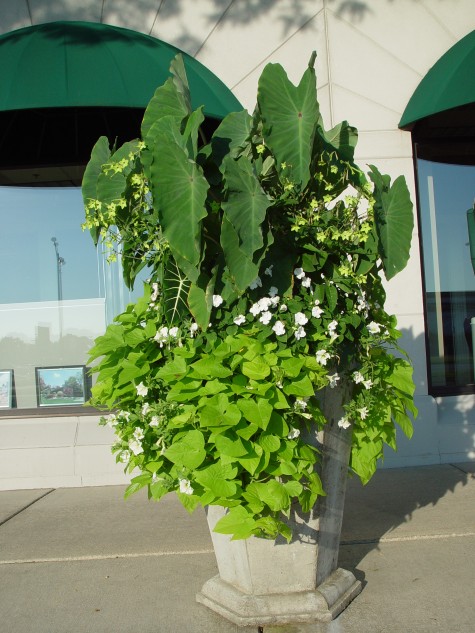
I have planted hundreds of different compositions in these pots over the years; it was a great job.
